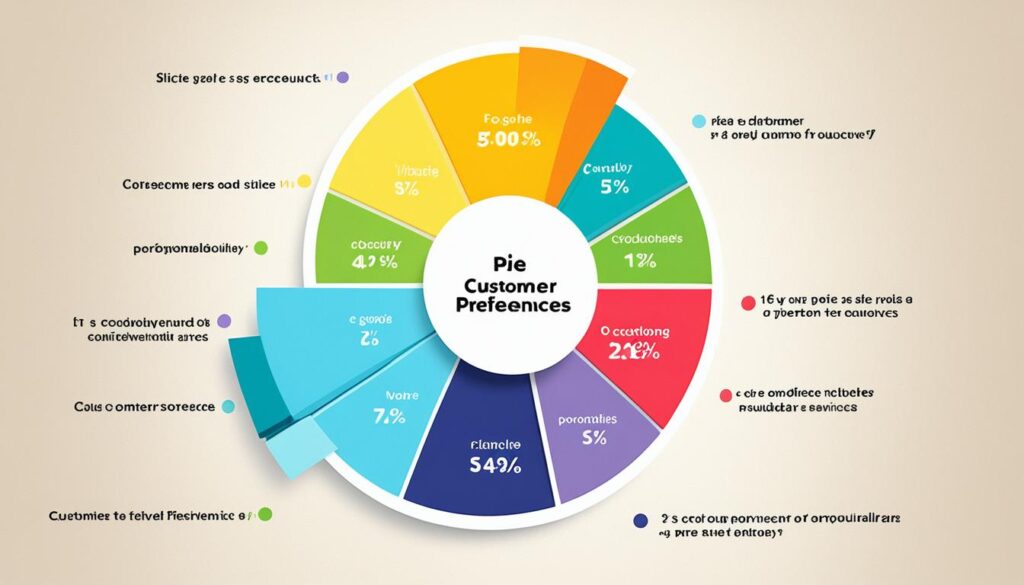Welcome to the Ultimate Customer Feedback Guide! In today’s competitive business landscape, customer satisfaction and feedback management are vital for improving customer experience and driving business growth. Positive customer experiences lead to increased purchases, positive recommendations, and higher profits. To achieve these outcomes, businesses must understand what drives customer satisfaction and loyalty.
In this comprehensive guide, we will explore various types of customer feedback and how they contribute to sales, customer support, product design, and content marketing. We will delve into the importance of customer loyalty metrics, the significance of customer satisfaction feedback, and how to leverage feedback for sales growth. We will also examine the role of feedback in enhancing customer service and support, understanding customer preferences for targeted marketing, and utilizing demographic information for improved customer satisfaction. Lastly, we will guide you through implementing an effective customer feedback loop for continuous improvement.
If you’re ready to supercharge your business growth through customer feedback, let’s get started!
The Importance of Customer Loyalty Metrics
Customer loyalty metrics, such as Net Promoter Score (NPS), are essential for understanding how loyal customers are to a brand and their likelihood to promote it. By measuring customer advocacy and satisfaction, businesses can gain valuable insights into the level of loyalty among their customer base.
NPS surveys and similar measures are widely used to collect customer loyalty metrics. These surveys often ask customers to rate their likelihood of recommending the brand to others. The responses are then used to calculate the Net Promoter Score, which provides a clear indication of customer loyalty.
High customer loyalty is a key driver of business growth. Loyal customers tend to make repeat purchases, provide positive recommendations, and contribute to overall brand advocacy. By focusing on improving customer loyalty, businesses can increase customer retention rates, enhance their reputation, and ultimately drive revenue.
Regularly monitoring the Net Promoter Score allows businesses to understand overall trends in customer satisfaction. It helps identify areas for improvement and provides a benchmark for evaluating the impact of changes made to products, services, or customer support.
Remember, customer loyalty metrics are not only about measuring how satisfied your customers are, but also about understanding their level of advocacy. By focusing on building strong customer relationships and fostering loyalty, businesses can drive sustainable growth and achieve long-term success.
“Loyal customers, they don’t just come back, they don’t simply recommend you, they insist that their friends do business with you.” – Chip Bell
Understanding Customer Satisfaction Feedback
Customer satisfaction feedback plays a vital role in evaluating the satisfaction level of customers with regards to products, services, and interactions with a brand. It consists of two essential components: functional metrics and emotional metrics.
Functional metrics delve into the utilization of the products and features offered by a brand. They assess how customers engage with the brand, their usage patterns, and the functionality of the products or services.
Functional metrics provide valuable insights into how customers actively engage with your brand, helping you identify areas of improvement to enhance their overall experience.
Emotional metrics, on the other hand, focus on the feelings and experiences customers have when interacting with a brand. They explore the emotional connection customers develop and their overall satisfaction levels with the brand experience.
Emotional metrics shed light on the emotional resonance your brand creates with customers, allowing you to reinforce positive experiences and rectify any negative encounters.
Businesses employ various methods to collect customer satisfaction feedback effectively. Comment boxes, pop-up forms, and post-purchase surveys serve as common channels for gathering this valuable feedback.
By analyzing customer satisfaction feedback, businesses gain insights that help identify areas requiring improvement. This, in turn, allows them to enhance the overall customer experience and drive greater customer satisfaction.

Fig.1: Image illustrating the importance of customer satisfaction feedback in improving business performance.
Leveraging Sales Feedback for Business Growth
Collecting sales feedback from your customers is an essential step in driving business growth. By allowing customers to share their experience with your sales team and process, you gain valuable insights that can help improve your sales strategies, training, and customer interactions.
Direct surveys, follow-ups with prospects, and post-purchase communication are effective methods of collecting sales feedback. These channels enable you to gather specific details about what worked well and what could be improved in your sales process. Listening to your customers’ feedback helps identify pain points and areas of improvement, ultimately leading to better customer engagement and higher conversions.
Implementing a customer feedback loop is key to leveraging sales feedback effectively. This loop allows you to continuously gather, analyze, and act on customer feedback to drive growth. By closing the loop with your customers and making improvements based on their feedback, you create a customer-centric sales process that fosters loyalty and satisfaction.
To illustrate the impact of sales feedback on business growth, let’s take a look at a real-life example:
“At ABC Electronics, we continuously monitor and analyze the feedback we receive from our customers regarding their sales experience. Through direct surveys and post-purchase communication, we gain valuable insights that help us refine our sales strategies and training programs. By addressing customer concerns and improving our sales process, we have seen a significant increase in customer engagement, resulting in a 15% boost in conversions over the past year.”
By leveraging customer feedback, ABC Electronics was able to identify areas of improvement and make meaningful changes to their sales process. This not only enhanced the overall customer experience but also drove tangible business growth.
Check out the image below for a visual representation of how incorporating sales feedback into your customer feedback loop can lead to business growth:

Implementing an effective sales feedback strategy is crucial in today’s competitive business landscape. By listening to your customers and making data-driven improvements to your sales process, you can enhance customer engagement, increase conversions, and ultimately drive sustainable business growth.
Enhancing Customer Service and Support Through Feedback
When it comes to customer service and support, feedback plays a crucial role in improving the overall customer experience. By gathering customer service feedback, businesses can address any issues, enhance the quality of their service, and optimize the design and functionality of their products. This not only leads to higher customer satisfaction but also reduces customer churn and contributes to better product development.
One effective way to collect customer service feedback is through phone or email surveys following customer support tickets. These surveys provide an opportunity for customers to share their experiences and provide valuable insights into the effectiveness of the support process. By analyzing this feedback, businesses can identify areas for improvement and take necessary actions to enhance customer service quality.
Furthermore, customer service feedback also helps businesses in addressing product-related issues. Customers often encounter difficulties or have questions while using a product, and their feedback regarding these experiences is essential for identifying and resolving any product-related challenges. By actively seeking and acting upon such feedback, businesses can proactively tackle product issues and ensure a smoother customer experience.

“Our customer service team actively seeks feedback to enhance the support experience. It allows us to address customers’ pain points and continuously improve our service quality.”
– Jennifer Smith, Customer Support Manager at XYZ Company
Acting on customer service and support feedback is not only beneficial for businesses but also crucial for customer satisfaction. By listening to customers’ concerns and making improvements based on their feedback, businesses can show their dedication to providing exceptional support. This, in turn, strengthens the customer-business relationship, increasing customer loyalty and advocacy.
Additionally, feedback on customer support experiences can directly impact product development. By gathering insights from customers’ interactions with support representatives, businesses can identify areas where product features or functionalities can be enhanced. This feedback loop between support and product teams helps drive continuous product improvement and aligns product development with customer needs and expectations.
In conclusion, customer service and support feedback are invaluable resources for businesses seeking to enhance their customer experience. By actively collecting, analyzing, and acting on customer feedback, businesses can improve service quality, address product issues, and optimize design and functionality. This continuous commitment to improvement ultimately leads to higher customer satisfaction, reduced churn, and better product development.
Understanding Customer Preferences for Targeted Marketing
Customer preference feedback is a valuable resource that allows businesses to gain insights into the likes and dislikes of their target customers. By understanding customer preferences, companies can refine their product positioning and tailor their marketing strategies to better meet customer needs. This section explores the importance of customer preference feedback in market segmentation and product positioning.
One effective method for gathering customer preference feedback is through online forums, where customers openly express their opinions and preferences. These forums provide a platform for customers to discuss their experiences with various products and services, including those offered by competitors. By monitoring these discussions, businesses can gain valuable insights into the features, benefits, and experiences that customers value the most.
Focus groups are another valuable tool for collecting customer preference feedback. These structured discussions allow businesses to interact directly with their target customers and obtain detailed insights into their preferences, motivations, and buying behaviors. Through a combination of open-ended questions, product demonstrations, and group interactions, businesses can uncover profound insights that can guide their decision-making and marketing efforts.
Monitoring customer purchase activity is yet another effective way to gather customer preference feedback. By analyzing customers’ buying patterns and behaviors, businesses can uncover trends and preferences. This information helps identify customer segments with specific preferences, enabling businesses to create targeted marketing campaigns that resonate with their audience.

By utilizing customer preference feedback, businesses can refine their market segmentation and target the right customers with the right messaging. This not only increases the effectiveness of marketing campaigns but also enhances customer satisfaction and loyalty.
The Value of Demographic Information in Customer Feedback
Demographic information plays a vital role in gathering customer insights and driving business growth. By understanding the demographic profile of your customers, including their geographical location, gender, education level, and marital status, you gain valuable insights into their preferences, needs, and behaviors.
With this information at hand, businesses can make data-driven decisions to improve their sales and customer service strategies. By tailoring your approach to specific demographics, you can provide personalized experiences that resonate with your target audience.
Customer service improvement is another area where demographic information is essential. By capturing demographic data through pop-up forms or post-purchase surveys, you can better understand the unique challenges and requirements of different customer segments. Armed with this knowledge, businesses can optimize their customer support processes to address specific needs effectively.
Moreover, targeted advertising efforts can be greatly enhanced through the use of demographic information. By knowing the characteristics of your target market, you can develop relevant and compelling ad campaigns that resonate with specific customer segments. This leads to higher engagement rates, increased conversions, and improved marketing ROI.
Customer demographic information is a powerful tool for businesses looking to improve customer service, develop targeted advertising campaigns, and gain a deeper understanding of their customer base. By leveraging this information, you can tailor your approach, deliver personalized experiences, and ultimately improve overall customer satisfaction.
Implementing the Customer Feedback Loop for Continuous Improvement
The customer feedback loop is a crucial strategy for collecting and implementing customer feedback to enhance the overall customer experience. By following four key steps – asking for customer feedback, categorizing the feedback, acting on the feedback, and following up with customers who shared feedback – businesses can ensure continuous improvement and drive customer satisfaction.
To gather valuable customer feedback, it is important to use the right channels that reach your customers effectively. Whether it’s through online surveys, feedback forms, or social media platforms, make it easy for customers to share their thoughts and opinions. Actively listen to what they have to say and respond promptly to show that their feedback is valued.
Implementing feedback is the next step in the customer feedback loop. Use the insights gained from customer feedback to identify areas of improvement in your products or services. Make necessary changes quickly and effectively, ensuring that the feedback is translated into tangible improvements. Communicate these changes to your customers, showing them that their feedback has made a real impact.
Finally, following up with customers who shared feedback helps close the feedback loop. Show appreciation for their input and let them know how their feedback has influenced positive changes. This follow-up action demonstrates that their satisfaction is a priority and builds trust, loyalty, and customer advocacy.
FAQ
What is customer feedback, and why is it important for business growth?
Customer feedback is crucial for business growth as it helps understand what drives customer satisfaction and loyalty. It provides insights into what businesses are doing right and wrong, making it valuable for various aspects like sales, customer support, product design, and content marketing.
What are some types of customer feedback?
There are various types of customer feedback, including loyalty metrics, satisfaction feedback, sales feedback, customer service or support feedback, customer preference feedback, and demographic information.
How can businesses measure customer loyalty?
Customer loyalty metrics, such as Net Promoter Score (NPS), measure how loyal customers are to a brand and their likelihood to promote it. NPS surveys and similar measures are used to collect this type of feedback.
How does customer satisfaction feedback help businesses?
Customer satisfaction feedback focuses on how satisfied customers are with products, services, and interactions with a brand. Analyzing this feedback helps businesses identify areas of improvement and enhance overall customer experience.
How can sales feedback contribute to business growth?
Sales feedback allows customers to share their experience with a company’s sales team and process. Improving the sales experience based on customer feedback leads to better customer engagement, higher conversions, and business growth.
What is the role of customer service and support feedback in business improvement?
Customer service and support feedback helps improve customer service quality, address product issues, and optimize design and functionality. Analyzing and acting on customer service and support feedback leads to higher customer satisfaction, reduced churn, and better product development.
How can customer preference feedback enhance targeted marketing?
Customer preference feedback reveals customers’ preferences for products and services, including those offered by competitors. It helps businesses understand their target customers better and refine their product positioning.
How does demographic information contribute to business improvement?
Demographic information provides valuable insights for businesses, helping improve sales and customer service strategies, as well as targeted advertising efforts. Leveraging this information allows businesses to tailor their approaches, understand customer needs, and improve overall customer satisfaction.
What is the customer feedback loop, and why is it important?
The customer feedback loop is a strategic system for collecting and implementing customer feedback to enhance the customer experience. It involves asking for customer feedback, categorizing it, acting on the feedback, and following up with customers who shared feedback. Implementing an effective customer feedback loop allows businesses to continuously collect and analyze customer feedback to drive growth and improve customer satisfaction.
